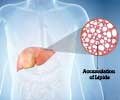There appears to be evidence of an association between calcium buildup in the coronary arteries (atherosclerosis) and changes in the structure and function of the heart.

‘There is a direct link between coronary artery calcium and changes in the heart. We have to follow a healthy lifestyle to prevent calcification of the arteries.’
Read More..




However, data on the association between coronary artery calcium and echocardiographic-based changes of the structure and function of the heart are lacking. Read More..
Researchers from Boston University School of Medicine (BUSM) evaluated the association between coronary artery calcification and echocardiographic measurements that quantify these changes in the heart among 2,650 participants (average age 51 years, 48 percent women) from the Framingham Heart Study.
They observed that higher coronary artery calcium scores were associated with higher values of left ventricular mass index and aortic root diameter, consistent with potential adverse effects of changes in the size, shape, structure and function of the heart.
"We know that coronary artery disease progresses along with myocardial disease, but these findings suggest that there may be a direct link between coronary artery calcium and structural and functional changes in the heart, emphasizing the need to follow a healthy lifestyle in order to help prevent calcification of the arteries," explained corresponding author Vanessa Xanthakis, PhD, assistant professor of medicine and biostatistics at BUSM and an Investigator for the Framingham Heart Study.
Xanthakis believes additional studies are needed to further clarify the pathophysiological basis of the observed associations and to assess whether coronary artery calcium can be used to predict changes in the structure and function of the heart.
Advertisement
Advertisement












